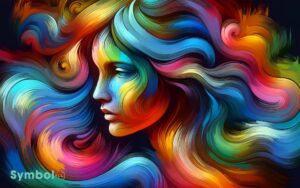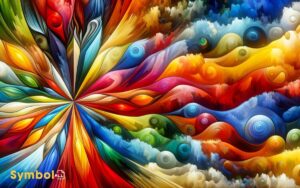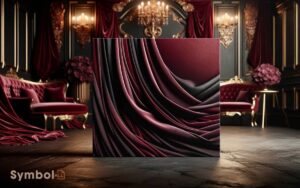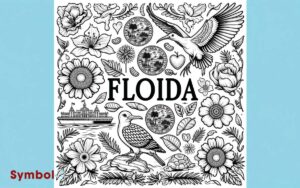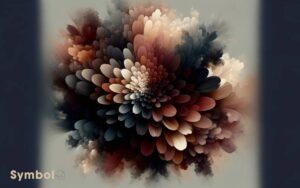Color Symbolism for the Great Gatsby: A Detailed Explanation
In “The Great Gatsby,” colors aren’t just shades; they’re a language.
- The green light symbolizes your unyielded hope, an eternal reach for what seems just across the bay, yet remains elusive.
- The Valley of Ashes paints your despair, a gray desolation where dreams disintegrate.
- Yellow and gold glitter with contradiction, reflecting wealth’s allure and its insidious corruption.
- White veils innocence, yet it’s tainted, questioning purity in a corrupt society. Blue casts illusions, presenting a facade of enchantment.
- Red, though, pulses with passion and violence, revealing the depth of emotion and brutality.
Each color invites you to look deeper into the American Dream’s fabric, beckoning a closer examination of its intricate threads.
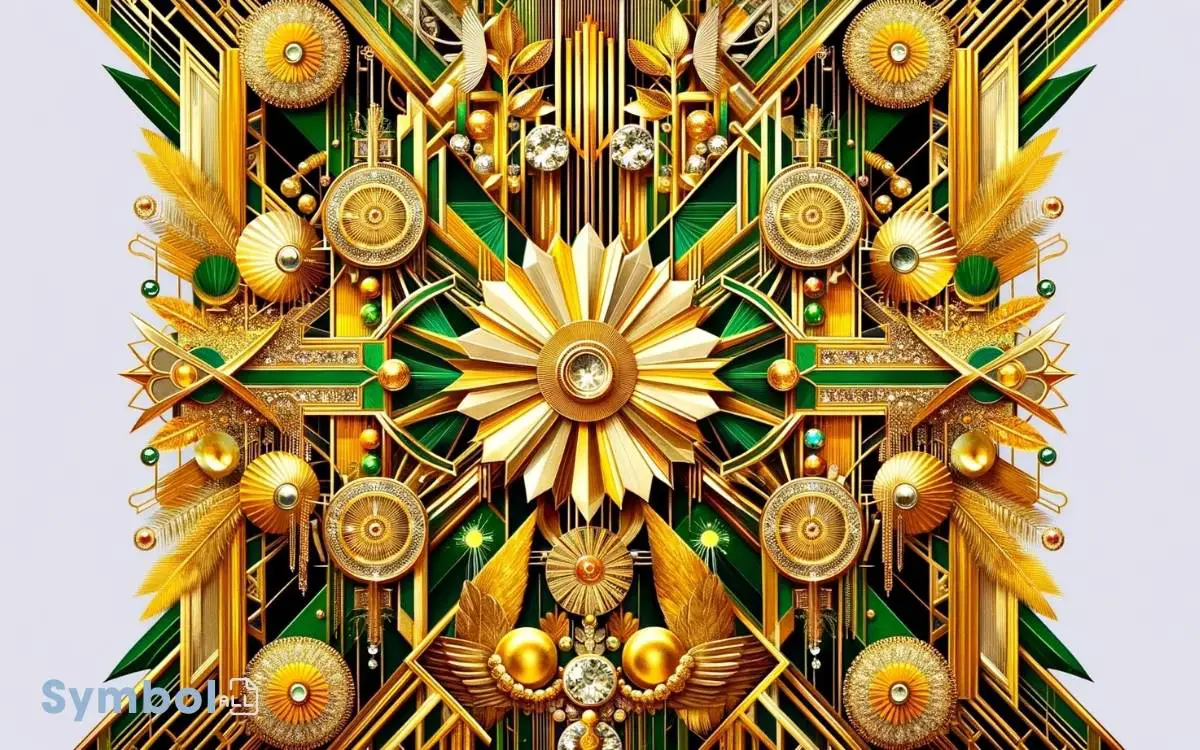
Key Takeaway
The Green Light: Hope and Desire
In F. Scott Fitzgerald’s ‘The Great Gatsby,’ the green light symbolizes the protagonist’s unyielding hope and desire for a future that reconciles his past with his dreams.
This beacon, shimmering across the bay, represents Gatsby’s aspirations for a life with Daisy, embodying an almost tangible manifestation of his longing.
It’s not merely a physical object but a metaphorical one, suggesting that Gatsby’s pursuit is as elusive as the light itself.
The color green, deeply entwined with notions of renewal and growth, also hints at the cyclical nature of Gatsby’s optimism, perpetually reborn despite the odds.
You’re invited to see beyond the surface, recognizing the light as a poignant reminder of the human condition’s intrinsic hope, even in the face of insurmountable odds.
The Valley of Ashes: Decay and Desolation
Contrasting sharply with the vibrant symbolism of the green light, the Valley of Ashes embodies the stark decay and desolation permeating the lives of those trapped within its dusty confines.
It serves as a critical foil to the opulence and carefree lifestyle of the characters who frequent East and West Egg, highlighting the vast disparities in the American dream.
This desolate landscape, covered in grays and muted tones, symbolizes the erosion of hope and the inevitable decline that follows unchecked ambition and moral decay.
| Aspect | Symbolism | Effect on Characters |
|---|---|---|
| Gray landscape | Decay, lifelessness, lack of hope | Despair, entrapment |
| Dust | The disintegration of dreams | Loss of direction |
| Industrial waste | The consequences of excess | Moral degradation |
This tableau of decline isn’t just a backdrop; it’s a potent reminder of the societal corrosion underpinning the glittering surface of the Roaring Twenties.
Yellow and Gold: Wealth and Corruption
Shifting focus from the desolate Valley of Ashes to the opulent displays of wealth, yellow and gold emerge as symbols not just of prosperity but also of the corruption festering beneath the surface of high society.
You’ll notice that these colors do more than just paint a picture of lavishness; they reveal the moral decay that accompanies the accumulation of wealth.
In Fitzgerald’s narrative, gold isn’t merely a marker of economic status but a signifier of the superficial values that the characters embody.
The distinction between genuine wealth and its gaudy imitation, represented by gold and yellow respectively, underscores the illusion of integrity among the elite.
This dichotomy serves as a critical lens through which you can examine the characters’ true intentions and the societal rot they mask with their glittering facades.
White: Innocence and Moral Ambiguity
White, often associated with purity and virtue, masks a complex layer of moral ambiguity within the characters of ‘The Great Gatsby.’
You’ll find that Daisy Buchanan epitomizes this duality. Her frequent adornment in white creates an initial impression of innocence and nobility.
Yet, as you explore further, it becomes evident that this façade conceals her selfishness and carelessness.
This juxtaposition challenges you to question the true nature of purity and whether it’s merely a superficial guise.
Similarly, the white curtains fluttering in the Buchanan’s mansion suggest a veneer of purity masking the moral decay within.
Through these symbols, Fitzgerald critiques the illusion of innocence in a society riddled with corruption, urging you to look beyond appearances to discern the complex moral landscape underneath.
Blue: Illusion and Fantasy
In the kaleidoscopic landscape of ‘The Great Gatsby,’ blue emerges as a poignant symbol of illusion and fantasy, inviting you to explore the characters’ deep-seated desires and the deceptive veneer of their world. This vibrant hue often underscores the unattainable dreams and emotional isolation that permeate the lives of the characters, casting a melancholic glow over their pursuits. Through the motif of blue, Fitzgerald delves into the fragility of hope and the dissonance between aspiration and reality. The color symbolism in The Great Gatsby becomes a lens through which readers can unravel the intricate layers of illusion woven into the narrative.
| Element | Significance | Example from Text |
|---|---|---|
| Blue Gardens | Unreal, dreamlike beauty | Gatsby’s lavish parties |
| T.J. Eckleburg | Godlike illusion of watch | The eyes overseeing the valley |
| Gatsby’s Car | Facade of prosperity | His ride to disillusionment |
| Daisy’s Aura | Enchantment Gatsby seeks | The untouchable dream |
This color invites you to question what’s real and what’s merely an alluring facade. Reflecting on these elements, you’re drawn into a deeper understanding of the characters’ illusions, enriching your grasp of this literary masterpiece.
Red: Passion and Violence
While blue casts a veil of illusion and fantasy over the narrative of ‘The Great Gatsby,’ red fiercely embodies the stark realities of passion and violence that underpin the tumultuous lives of its characters.
This vibrant hue punctuates the text, symbolizing both the depth of emotion and the brutality of actions that define the era Fitzgerald explores.
You’ll explore red in the visceral descriptions of Tom’s cruelty and in the blood that marks tragic ends, serving as a poignant reminder of the consequences that often follow unchecked desire.
Fitzgerald masterfully uses red to navigate you through the spectrum of love and aggression, illustrating how closely they’re intertwined in the human experience.
As you dig deeper, you’ll see that red isn’t just a color; it’s a narrative device, shaping your understanding of the characters’ motivations and fates.
Conclusion
In your journey through ‘The Great Gatsby,’ you’ve seen how colors paint a tale more complex than a mere rainbow.
Ironically, the vibrant hues betray a world where dreams are as translucent as Gatsby’s illusory blue garden.
The green light of hope fades into the yellow of corruption, revealing a spectrum where purity and decay intertwine.
Fitzgerald’s palette masterfully blends desire and disillusionment, leaving you to ponder the true colors of your own aspirations.

